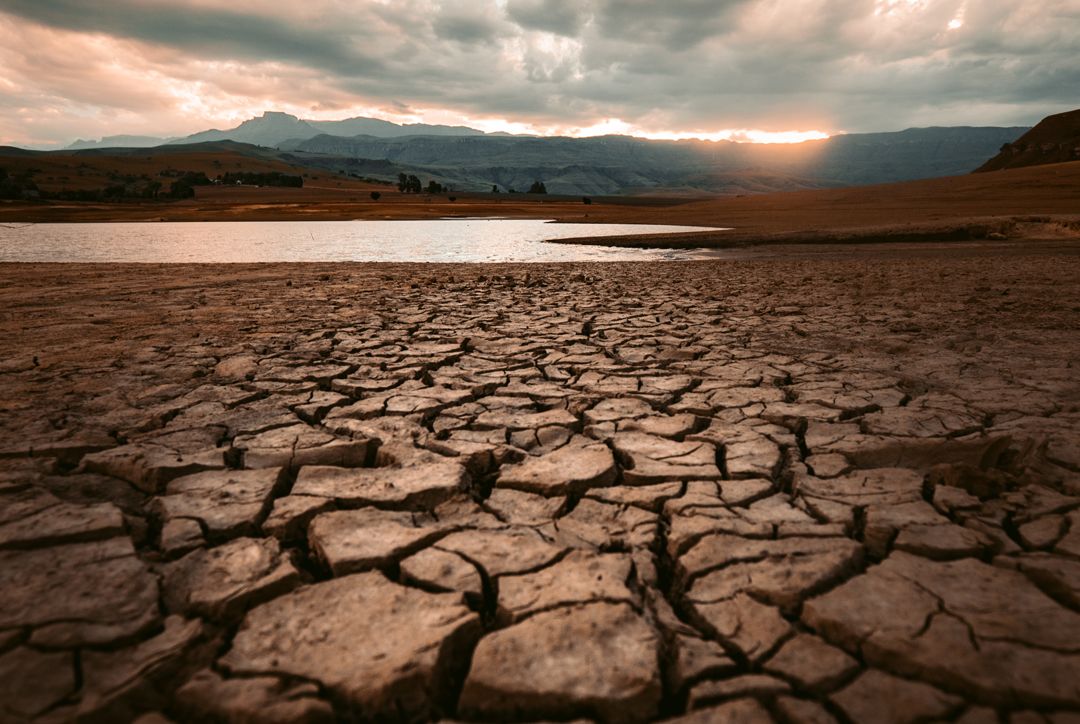Global climate change is one of the greatest challenges facing humanity today. The increase in Greenhouse Gas (GHG) emissions, resulting from human activity, has caused global warming and serious consequences, such as melting glaciers, rising sea levels, acidification of the oceans and the intensification of events extreme climates. These impacts affect human health, food security, the availability of potable water and biodiversity, among other aspects.
Sustainable Development Goal 13 – Action Against Global Climate Change – is one of the 17 SDGs adopted by the United Nations General Assembly in September 2015. SDG 13 aims to combat climate change and its negative impacts by promoting urgent action and coordinates around the world. SDG 13 recognizes the need to reduce greenhouse gas emissions and increase communities' resilience and adaptability to the impacts of climate change. The implementation of SDG 13 contributes to achieving other goals related to sustainable development, such as combating poverty, food security, health and well-being, gender equality and protecting biodiversity.
Goals of SDG 13
SDG 13 sets five goals to be achieved by 2030:
- Strengthen the resilience and adaptability of communities to the impacts of climate change.
- Integrate mitigation and adaptation measures into national policies and strategies.
- Improve education, awareness and human and institutional capacity on mitigation, adaptation, impact reduction and early warning of climate change.
- Increase the ability to mobilize financial resources from various sources for climate change mitigation and adaptation actions in developing countries.
- Implement the commitment assumed by developed countries to allocate financial resources in support of mitigation and adaptation actions in developing countries.
Actions Necessary to Achieve the Goals
To achieve the SDG 13 targets, it is necessary to take urgent and coordinated actions in all areas of society. Some of the main actions include:
- Reduction of GHG emissions: it is necessary to adopt measures to reduce greenhouse gas emissions in all sectors of the economy, such as energy, transport, industry, agriculture and construction. This can be done through policies and regulations, incentives for clean and renewable technologies, and changes in behavior.
- Adaptation to climate change: it is important to invest in measures that help communities adapt to the impacts of climate change, such as increasing the resilience of infrastructures and communities, early warning systems, diversifying sources of water and food, among other actions.
- Education and awareness: It is essential that the general public, political and business leaders, and other decision makers have a thorough understanding of the causes and impacts of climate change, as well as the actions needed to combat them. Awareness and education can be done through public campaigns, education programs in schools and universities, and sensitization initiatives.
- Financing for climate action: It is necessary to mobilize financial resources to help developing countries implement measures to mitigate and adapt to climate change. This can be done through international cooperation agreements, climate financing and investments in clean and renewable technologies.
Meeting the Goals of SDG 13 – Action Against Global Climate Change is essential to ensure a sustainable future for the planet. While some countries face significant challenges in achieving these targets, others stand out for their efforts to reduce greenhouse gas emissions and increase communities' resilience to climate change.
Here are some examples of countries that are leading the way in meeting SDG 13 targets:
Sweden: Sweden is a world example in combating climate change, having adopted a series of ambitious policies to reduce greenhouse gas emissions and increase the use of renewable energy sources. Since the 1990s, Sweden has implemented innovative policies to reduce its greenhouse gas emissions, such as the introduction of a carbon tax in 1991. This tax has become a model for other countries around the world.
In addition to the carbon tax, Sweden invests significantly in renewable energy technologies such as wind power and solar power. The country aims to achieve carbon neutrality by 2045 and is on track to achieve it. In 2020, Sweden emitted only 47 million tons of CO2, a reduction of 25% compared to 1990, while its economy grew by 80% in the same period.
Another measure adopted by Sweden is the promotion of sustainable means of transport. The Swedish government offers incentives for the purchase of electric cars and invests in an efficient public transport network, with buses running on biofuels and electric trains.
There is also an interesting initiative, which is the program for the construction of ecological buildings, with the aim of reducing energy consumption and reducing greenhouse gas emissions. Sweden also has an extremely effective recycling policy, with a recycling rate of over 99% of PET bottles.
Denmark: Denmark is a country at the forefront of the fight against climate change, having set a series of ambitious targets to reduce greenhouse gas emissions and increase community resilience. In 2019, the Danish government announced that it plans to reduce GHG emissions by 70% by 2030 from 1990 levels. This is one of the most ambitious targets in the world and puts Denmark at the forefront of the fight against climate change.
The country invests heavily in renewable energy, aiming to reach 100% of renewable energy by 2050. In 2019, Denmark generated over 47% of its electricity from renewable sources such as wind and solar power. Furthermore, Denmark is a world leader in wind energy technologies and exports its wind turbines all over the world.
Denmark is also committed to sustainable transport, encouraging bicycles as a means of transport and investing in an efficient public transport network. Copenhagen, the Danish capital, is known as one of the most bicycle-friendly cities in the world, with more than half of the inhabitants using bicycles daily as a means of getting around.
Another interesting initiative is the creation of resilient communities, capable of facing the effects of climate change. Denmark is investing in flood prevention technologies and is building a series of dykes to protect coastal communities from rising sea levels.
Morocco: Morocco has emerged in recent years as a leader in the development of renewable energy sources and in the adoption of measures to increase the resilience of communities to climate change. The country has great potential for solar energy and has invested significantly in photovoltaic energy projects across the country. The Noor project, for example, is one of the largest solar parks in the world and is located in the desert near the city of Ouarzazate. The plant has a total capacity of 580 MW and is capable of supplying power to over one million people.
In addition to the development of renewable energy sources, Morocco has also taken measures to increase communities' resilience to climate change. The country has faced challenges related to water scarcity and droughts, and has been working to develop more efficient irrigation systems and investing in water conservation technologies. The government also encourages the development of more sustainable agricultural practices, which help preserve biodiversity and increase the resilience of local ecosystems.
Finland: Finland is a country that stands out in the fight against climate change, with one of the greenest economies in the world. The country has set ambitious targets for reducing greenhouse gas emissions, with the aim of reducing emissions by 80% by 2030 from 1990 levels. Finland has also invested in renewable energy sources such as wind power and geothermal energy, with the aim of increasing the share of renewable sources in its energy matrix.
In addition to investing in renewable energy sources, Finland has adopted a series of measures to increase energy efficiency and reduce consumption of fossil fuels. The country has been encouraging the use of electric vehicles and supporting more sustainable public transport projects. Finland has also promoted the use of more efficient technologies in buildings and in industrial processes.
Another important initiative adopted by Finland is the use of biomass for energy production. The country has a large amount of forests and uses wood as a source of renewable energy. Finland has also been working to promote sustainable forest management practices, which help preserve biodiversity and increase the resilience of local ecosystems.
These countries are demonstrating leadership and commitment towards meeting the SDG 13 targets and are an example for other countries seeking solutions to climate change. However, we cannot ignore the fact that developing countries are not on this list of the most active with regard to the goals of SDG 13. One of the main factors for the low participation of underdeveloped countries in complying with climate actions is the lack of financial resources and technologies to implement policies and projects for mitigation and adaptation to climate change. Developing countries often face significant financial challenges, limiting their ability to invest in clean energy technologies and infrastructure.
To make matters worse, many developing countries still have economies based on fossil fuels, which makes the transition to cleaner and more renewable energy sources difficult. Reliance on fossil fuels can also lead to political and economic pressures that make it difficult to implement climate change policies.
Another challenge facing developing countries is the need to balance climate change mitigation with economic and social development priorities. Many of these countries face significant challenges in terms of poverty, food security and access to basic services, which can make the implementation of climate change policies less of a priority.
It is important to emphasize that the fight against climate change is a responsibility shared by all countries, and that collective action is essential to achieve the goals of SDG 13. It is important that developed countries with the commitments signed by the UN provide financial and technological support to less economically favored countries in order to help them implement climate change policies and projects more effectively.
SDG 13 is crucial to tackling one of humanity's greatest challenges: global climate change. It is necessary to take urgent and coordinated actions in all areas of society to achieve the targets of SDG 13 and ensure a more sustainable future for future generations. Reducing greenhouse gas emissions, increasing communities' resilience and adaptability, improving education and awareness, and mobilizing financial resources are some of the actions that need to be taken to achieve these goals.




